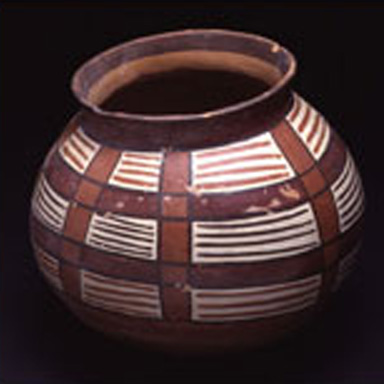
Click here to view image
Globular vase, (Nasca - Tiawanaku)
Painted terracotta

Click here to view image
Globular vase, (Nasca - Tiawanaku)
Painted terracotta

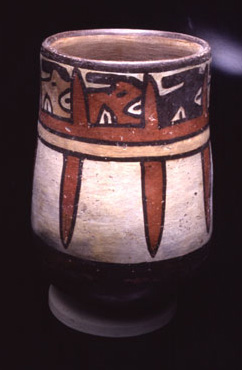
Click here to view image
Molded cup
Schmidt y Pizarro 1934 acquisto
cultura Nazca, fase 4, stile monumentale
Molded cup
II BCE - III CE - 125 a.C. - 201 d.C.
Unità di misura: cm; Altezza: 14; Diametro: 8
Perù
argilla- a colombino
Mostra d'arte precolombiana e di etnologia americana - Genova/ Castello D'Albertis - 1972-1977
The object was a part of grave goods. Convex-bottomed glass painted in ochre with a plum-colored lower band. Traces of poor firing are visible on the bottom and wall. The wall has slight shaping and is decorated with stylized motifs arranged in two bands, painted in orange, ochre, and brown on a cream background and bordered in black.

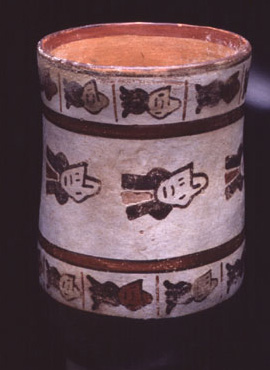
Click here to view image
Cup with stylized representation of "trophy heads", 0 (?) - 125 (?) A.D. (Nasca 5) (?)
Painted terracotta

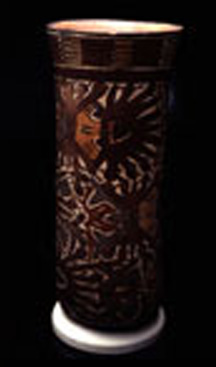
Click here to view image
Cylindrical vessel (florer), 125 - 225 A.D. (Nasca 6)
Unità di misura: cm
Altezza: 18.5
Diametro: 7.5
Sud America, Perù (costa meridionale)
Painted terracotta
Cylindrical vessel (florer) with representation of the "mythical zoomorphic being"

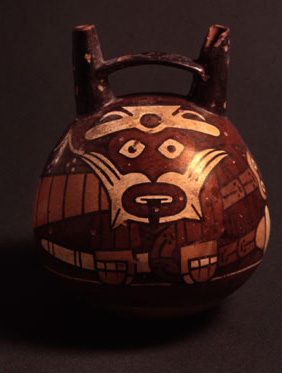
Click here to view image
Globular vase with bridge handle
Schmidt y Pizarro 1934 acquisto
cultura Nazca
Globular vase with bridge handle
Globular vessel
III-I b.C. - 300 b.C. - 1 b.C.
Unità di misura: cm; Altezza: 17; Diametro: 13
Perù
argilla- a colombino
Mostra d'arte precolombiana e di etnologia americana - Genova/ Castello D'Albertis - 1972-1977
Figure with feline head with facial mask, serpentine body ending with an ornithomorphic figure and paws holding a weapon with a trophy head on one of the two ends. Representation of the snake creature. The object was part of a funerary object. The convex bottom of the vase is painted in ocher and delimited at the top by a brick-colored band, bordered by a cream line. On the room painted in plum tones, a zoomorphic figure appears created in ocher, cream, orange, brick and gray shades, outlined by a black border. The handle and beaks are painted brown.

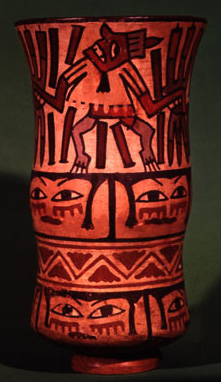
Click here to view image
Cylindrical vessel (florer), 0 - 400 A.D. (Nasca 5/6/7
Painted terracotta
Cylindrical vessel (florer) with representation of female faces, prisoners and darts

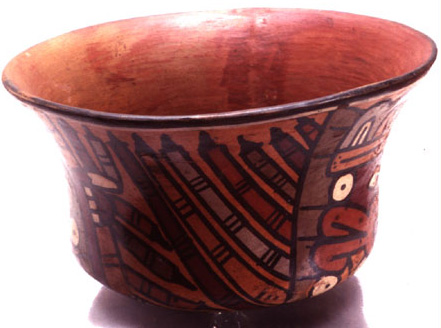
Click here to view image
Bell-shaped cup, 125 (?) - 225 (?) A.D (Nasca 6) (?)
Painted terracotta
Bell-shaped cup with representation of "trophy heads", decapitated bodies and mythical anthropomorphic beings

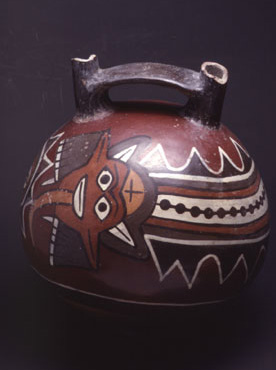
Click here to view image
Globular vase with bridge loop with representation of serpentiform figures (Nasca)
Painted terracotta

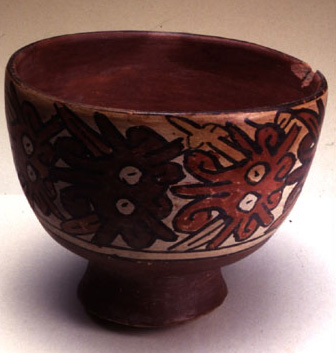
Click here to view image
Cup, 125 - 225 A.D. (Nasca 6)
Painted terracotta
Cup with representation of the "Mythical Anthropomorphic Being"

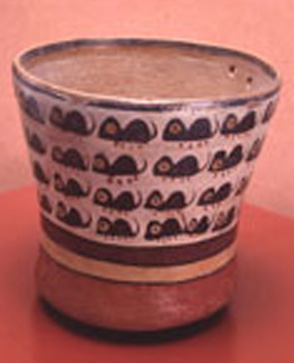
Click here to view image
Glass with small painted rodents (Nasca)
Painted terracotta




Headquarters:
Municipality of Genoa - Palazzo Tursi
Via Garibaldi 9 - 16124 Genoa
C.F / VAT 00856920102